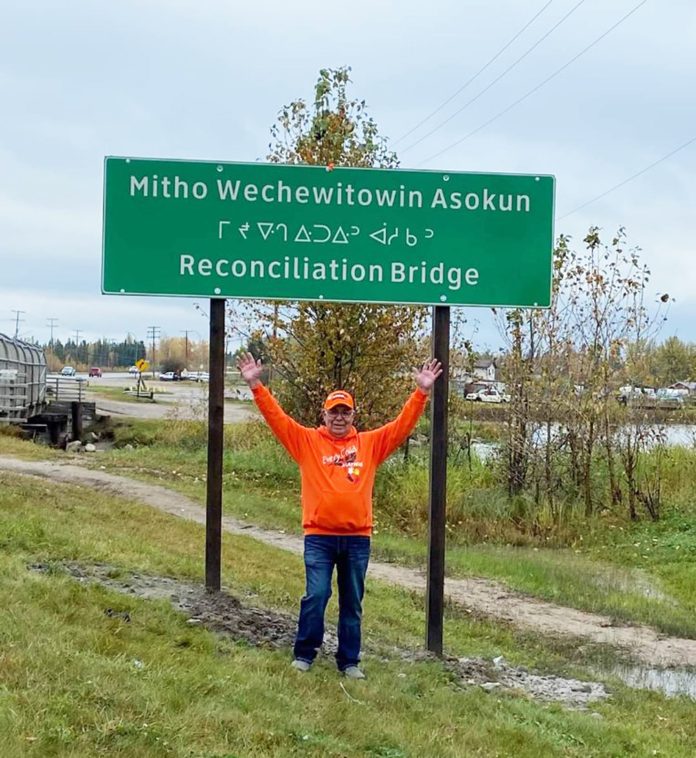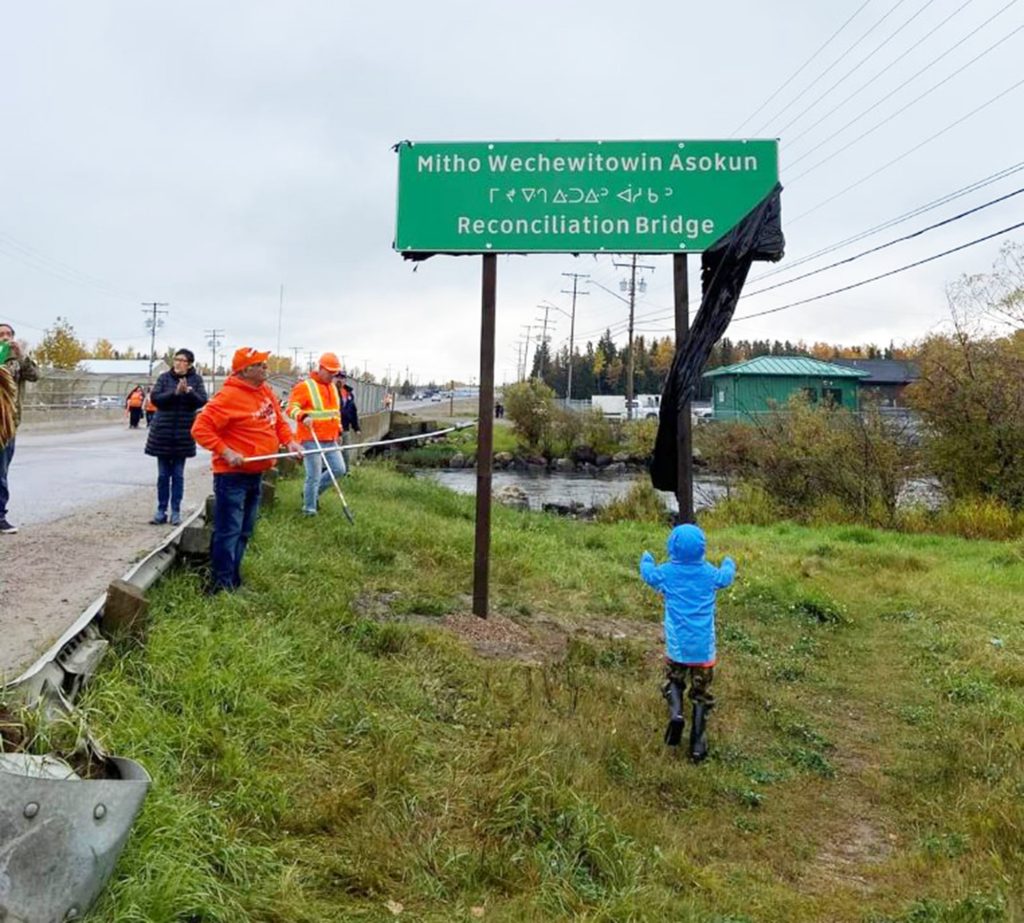
As of Sept. 30, the Hwy 2 bridge that connects the Village of Air Ronge, Lac La Ronge Indian Band, and the Town of La Ronge, will now be known as Reconciliation Bridge, or ‘Mitho Wechewitowin Asokun’ in Cree.
The new name and sign were unveiled at a special ceremony on the National Day for Truth and Reconciliation. Local Elder and former residential school student Tom Roberts was the driving force behind the name change. He said it feels good to see the new sign and the new name.
“I feel humbled, and every time I cross that bridge I slow down and I read the sign,” Roberts said in a phone interview with the Northern Advocate.
“It makes me feel good. It was a bit of an emotional journey”
Roberts had an idea to rename the bridge more than a year ago. He used to cross the bridge when travelling by bus to the residential school, then again when he returned to his home in the north at the end of the school year.
He said the bridge connects the three northern communities, and he hopes the sign will help remind people of the connection needed to move forward with reconciliation.
“A friend of mine told me once, ‘people are listening and they want change,’” Roberts said.
“It’s healthy to talk about it. Yes, there’s pain when you talk about it, but once you get it out of your system, you feel a lot better. You got it out. You’re not angry anymore.”

As a child, Roberts attended residential school in Prince Albert 10 months out of the year, then returned to his home in Northern Saskatchewan for the other two. As an adult, he became a well-known broadcaster and radio announcer, spending 27 years working for the CBC in La Ronge.
He retired from broadcasting in 2010, but stays active travelling the province speaking to people about residential schools, and the effects they had on Indigenous students like himself.
“What happened in these schools really happened,” he said. “They’re not just stories. They’re actual experiences of what kids and youth went through with the residential schools, the abuse and stuff.
“Yes, we got an education, but it didn’t have to happen that way. It forced things upon us that we didn’t know anything about, and worst of all, they just about took away our language, our culture, our identity of who we are as First Nations people.”
Dignitaries from all three communities attended the special sign unveiling on Sept. 30. All three welcomed the renaming.
“(At) a symbolic level, a bridge is an example of the simplified spirit of reconciliation,” Air Ronge Mayor Julie Baschuk said in a press release. “It facilitates bringing people together. We feel that naming the bridge will underscore why both the bridge itself and, on a grander scale, Reconciliation is vitally important to our collective paths forward.”
“’Mitho Wechewitowin Asokun – Reconciliation Bridge’ stands as a powerful and perpetual symbol for our community and for all who pass through the La Ronge area,” Lac La Ronge Indian Band Chief Tammy Cook-Searson added. “It signifies the steadfast dedication of our three communities on the road to reconciliation that unifies us. Together, we must acknowledge the painful past of the residential schools, honour the survivors, and commemorate those who didn’t make it back home.
“As we move forward, let this bridge serve as a beacon of hope, unity, and remembrance, embodying the spirit of togetherness essential for meaningful reconciliation as we step into the future.”
“Reconciliation Bridge connects our communities and allows us to work collectively as a Tri-community,” Town of La Ronge Mayor Joe Hordyski said. “The new name will serve as a constant reminder of the importance of our principles in decision-making as we move forward in a meaningful way.”
Athabasca MLA Jim Lemaigre attended the ceremony on behalf of Highways Minister Lori Carr. He said the bridge stands as a timeless symbol for both residents and visitors, representing the ongoing journey of reconciliation.
“Collectively we must remain vigilant in acknowledging the impact of residential schools, while paying tribute to survivors and honouring the memory of those who never returned,” he said in a press release.
The province plans to add a second bridge to the crossing, doubling the capacity to move people and goods through the area. There are also plans to add new lighted pathways so people can travel safely on foot or by bike.
@kerr_jas • jason.kerr@paherald.sk.ca

